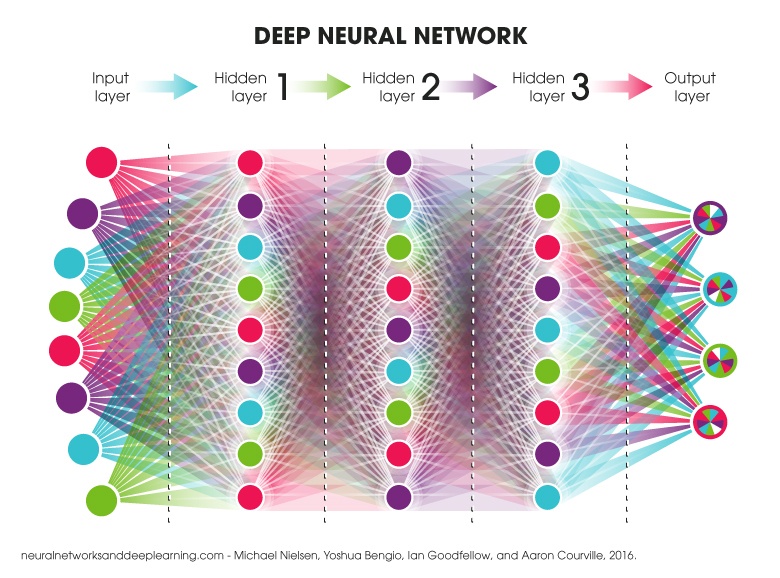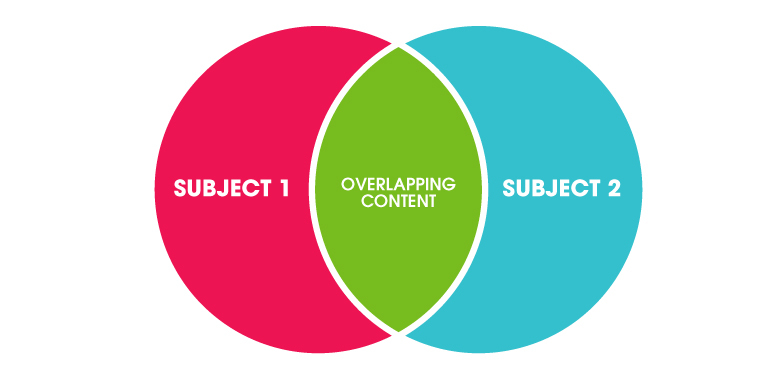How Artificial Intelligence Will Shape eLearning?
In an age where everything is changing –and changing fast– it’s easy to forget how much we’ve progressed. While we may not have floating cars or robotic teachers, we are on the brink of some very exciting and dramatic developments across all industries. As one of the principal drivers of progression, it’s no surprise that learning –and education in general– has been a focus of technological advances. While eLearning is not a new concept, its popularity is increasing, especially as technology becomes more affordable. A big barrier for eLearning is the cost of developing content. According to a survey conducted by Chapman Alliance, developing one hour of eLearning content can take anything from 49 to 125 hours. In comparison to the 22 to 82 hours that it takes for instructor-led training (ILT), it is easy to see how the costs stack up. Even though eLearning wins in the long run due to its scalability, it can still pose a barrier to companies that can’t afford the initial investment. Developing ways to repurpose existing content can mitigate the expense of content development, and recent advances in Artificial Intelligence (AI) could be the silver bullet that’s needed. Here is how Artificial Intelligence will shape eLearning in the future.
Artificial Intelligence Doesn’t Equal Machine Learning
There is quite a lot of confusion about the difference between AI and machine learning. While many big companies use them interchangeably, they are not the same thing. Related, sure, but different.
Google defines AI as “the theory and development of computer systems able to perform tasks normally requiring human intelligence, such as visual perception, speech recognition, decision-making, and translation between languages”.
Think of it like this: If a computer gathers information about birds and refines it over time, it would be considered machine learning. If that computer then categorized those birds based on that information, it could be said that the computer used AI in order to achieve that task. That is, the computer used AI to categorize the birds based on the refined information that it gathered during machine learning. Machine learning is to Artificial Intelligence what books are to education.

Machine learning is a system where a computer can learn without being explicitly programmed – it has dynamic parameters whereas, up until a couple of years ago, the sum total of AI was a set of static parameters cleverly pre-programmed by a developer.
Machine learning can be separated into 3 categories:
1. Supervised Learning.
Machines are given data that is well-labeled and tagged with the correct answer. They’ll process it and once training is complete, apply it to unseen data. Accuracy is directly proportional to the size of the data set.
Example: Labeled data about birds, where the machine gathers information about each avian individual.
2. Unsupervised Learning.
Machines are given specific data (that is, in a particular category) but it isn’t labeled.
Example: Data about birds, but no additional information.
3. Reinforcement Learning.
Machines are given unlabeled data that is graded after processing. This means that the computer is told how accurate the output is, so it can reinforce the decisions it made along the way. This method requires many data sets in order to become accurate.
Example: A game of chess. The machine has no preprogrammed moves (apart from the game rules) but the output is graded, so it knows whether it won or lost. If it won, it can then go and reinforce the decisions it made.
Deep Learning And Artificial Neural Networks Explained
As we progress in the field of AI, new techniques are being developed to improve the effectiveness of machine learning, constantly pushing us towards true autonomy. One such technique is an Artificial Neural Network. This is quite a popular method as it has opened the door to deep learning as well as making the applications of AI far-reaching and meaningful.
An Artificial Neural Network is a technique applied to machine learning. It’s composed of a network of nodes or neurones, loosely resembling the human brain and neural system.
Data is sent to the input layer (A) which manipulates data and then passes it on to the second layer (B & C). These nodes then further manipulate the data and pass it on to the output layer (D).
Each node manipulates the data based on weights that are adjusted through training processes.

On the other hand, deep learning is more intricate as it consists of multiple hidden layers and produces a far more complex network called a “deep neural network”. This is where AI starts getting very interesting. Deep learning is the jump from telling computers what to do to giving them examples of what to do and letting them figure out how to apply it to other situations; the jump from predefined steps to predefined models.
Deep Learning has pushed the field of AI forward recently, producing incredible results in areas like speech and image recognition. Where most machine learning methodologies try to model the world, deep learning attempts to model the human brain in order to create and maintain its own representations of the world.

What Classification Could Mean For eLearning
One area that is being vastly improved by deep learning is classification. Training a machine to be able to recognize data and classify it accurately has multiple useful applications: Image categorization, translation, and caption generation to name a few. Classification is particularly beneficial for eLearning. Using machines to help classify and organize content, would greatly reduce the cost of content development.
Classifying information accurately in terms of subject matter is extremely beneficial as it minimizes the resources needed to repurpose content. However, without automation, it can be an extremely tedious and time-consuming task.
Deep learning promises to solve this challenge. More importantly, however, it has the potential to improve classification and instructional design altogether. Identifying related concepts across subjects is powerful and would not only reduce the resources required to repurpose content, but also allow machines to produce new content in subjects that are not initially developed.
For example, while subjects like Physics and Optometry are completely different subjects, there are concepts within the material that would overlap – light for example. Sifting through all of the content in each subject to identify related concepts would take many man hours and subject knowledge, yet with deep learning, machines have the potential to perform that task quickly and efficiently.

Suddenly, thanks to machine learning and classification in particular, the applications of AI in eLearning become extremely tangible and have the potential to reduce the cost of content development drastically.
Applying Adaptive Learning Environments
The application of AI to eLearning content is not just a cost-saving solution; it also opens up a whole new way of looking at learning itself.
People learn in different ways and at different paces, so one of the major challenges in classrooms is maintaining a balance between engaging the quicker learners and accommodating the slower ones. In this type of situation, adaptive learning environments can allow for a completely individualized pace.
This includes environments that can accommodate individual learning styles and can run in parallel to each other. Thus, creating a far more effective learning environment, and increasing the chances of a group of individuals assimilating information accurately over a set period of time.
Apart from the quality of learning, AI presents an extremely valuable solution for training in industries with a high rate of dynamism. Companies that need to update their course material on a continuous basis will benefit from adaptive learning environments once machines have the ability to accurately predict how course material needs to improve and change.
Intelligent learning environments can also analyze data across all personalized training instances, to recommend improvements and highlight inefficiencies that would not be possible otherwise. Of course, there is the benefit of using AI for translating content into other languages - this alone could save industries millions every year.
Once a machine has developed the ability to create new content, personalization of learning will exponentially improve. Adaptive learning technologies would give rise to completely personalized environments with content that not only changes but are actually created based on the individual needs of the learner. So, as you can see this technological advancement would vastly improve the quality of education that the learner receives in various ways.
Ethical Implications Of Artificial Intelligence
One point of contention with deep learning, and AI in general, is that of responsibility. With traditional training environments, the trainer is responsible for the information being relayed to learners and assumes the responsibility to ensure that it is accurate. If not, they are liable.
However, with AI the creators of the algorithms are not the creators of the content their algorithms produce. This presents a massive problem if something goes wrong; machines cannot be held accountable in the same way that humans can.
That being said, in a discussion at the Disrupt London tech conference, Google’s DeepMind CEO, Mustafa Suleyman, spoke about the responsibility designers and technologists have to think consciously when building these systems. He mentioned that the creators could unwillingly introduce their biases into the systems being built – without realizing it.
In March Microsoft released a Twitter chatbot as an experiment. It learned as people tweeted to it. In less than 24 hours, it went from tweets like “humans are cool” to “Hitler was right” showing the impact that our own flaws can have with AI systems.
Holding the creators of algorithms liable is not technically fair though. The systems learn from the data being processed, not from the algorithms themselves. And in verticals where safety and compliance is non-negotiable, such as a learning environment, this could present a radical problem.
It is up to the people managing the AI systems to ensure that the data being processed is fair and accurate. Just like a teacher’s responsibility to teach with accurate material.
The benefits of deep learning and its application to eLearning are undeniable. Both the quality of learning as well as the cost of it are bound to be disrupted at a fundamental level. But there are potential consequences that are difficult to predict, and therefore to address.
Improvements in learning and information transferal is exponentially improving human progression, and like our predecessors, we need to take risks for the sake of our future.
References:
- 8 Inspirational Applications of Deep Learning
- Classification (machine learning)
- How Long Does it Take to Create Learning?
- The ethical and social implications of personalization technologies for eLearning
- Finally, Neural Networks That Actually Work
- Twitter taught Microsoft’s AI chatbot to be a racist asshole in less than a day

